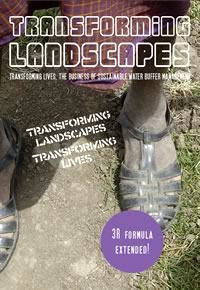The Effect of Holistic Planned Grazing on African Rangelands: A Case Study from Zimbabwe

South Africa’s Agricultural Research Council completed this study over a 6-year period comparing the Africa Centre for Holistic Management’s land at Dimbangombe under Holistic Planned Grazing (HGP), to nearby communal areas where HPG was not practiced. The researchers concluded that HPG yields positive long-term effects on ecosystem services (soils and vegetation) and points to the HPG approach enhancing the sustainability of livestock and wildlife in this environment.
Whole-System Approach Managing Grazing to Restore Soil Health and Farm Livelihoods

This paper is a literature review on the ecological impacts of grazing, and finds that where managed properly (employing a “whole-systems approach” and “adaptive, goal-directed grazing methods”) livestock are essential to ecosystem service sustainability and improvement. Soil organic matter increases were sufficient to yield a net sink of 2 tons of carbon per hectare per year.
Effects of holistic grazing management on milk production, weight gain, and visitation to grazing areas by livestock and wildlife in Laikipia County, Kenya

This paper studied the effects of holistic planned grazing on milk production, weight gain, and visitation to grazing areas by livestock and wildlife in Laikipia County, Kenya. Results found that, with significantly higher numbers of grazing animals, the number of wildlife more than doubled, average milk yields increased, and animal weight gain nearly doubled compared to traditional grazing areas.
Controlled intensive grazing: Savannah Grasslands, Africa

This chapter appears in a book about sustainable land management, the development of water buffers, and the business case in favor of investment in natural resource management.
Improved Grazing Management Increases Terrestrial Invertebrate Inputs That Feed Trout in Wyoming Rangeland Streams

This paper shows that proper grazing management in riparian areas can have a beneficial impact on trout populations. The biomass of trout in areas under a type of grazing called “high-density short-duration” (HDSD) were twice that of those in similar areas under “season-long (SL)” grazing. The hypothesis is that increased riparian vegetation observed via HDSD grazing leads to greater insect populations (“terrestrial invertebrates”) that fall or crawl into the rivers and become a protein source (“input”) for trout consumption. Measurements are made of the riparian vegetation and trout biomass.
The Effect of Grazing Regime on Grassland Bird Abundance in New York State

This paper quantified and compared bird abundances on pastures that were subject to continuous grazing, minimal rotation, or Holistic Management. Holistic resource managed pastures had 1.5 and 4.5 times higher average abundances of obligate grassland birds than minimally rotated or continuously grazed pastures, respectively.
